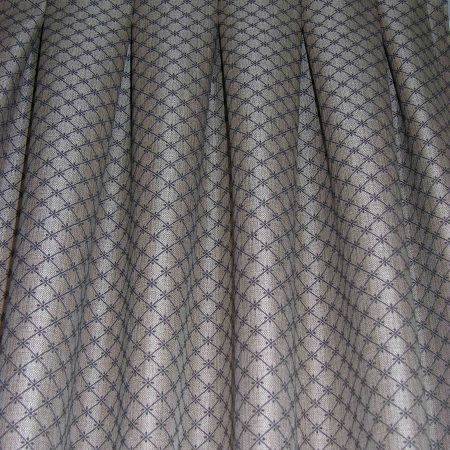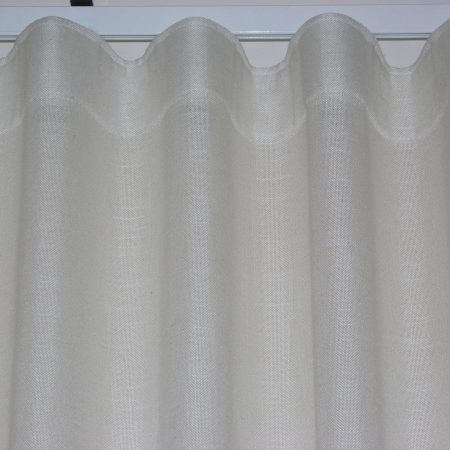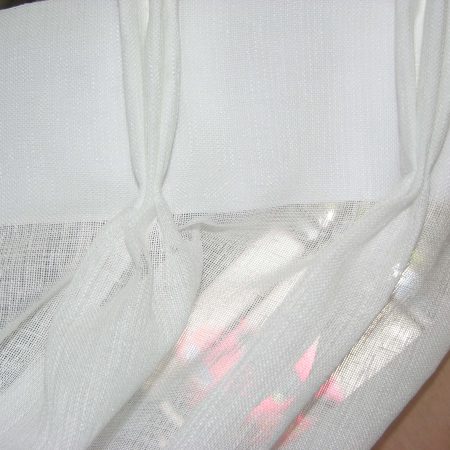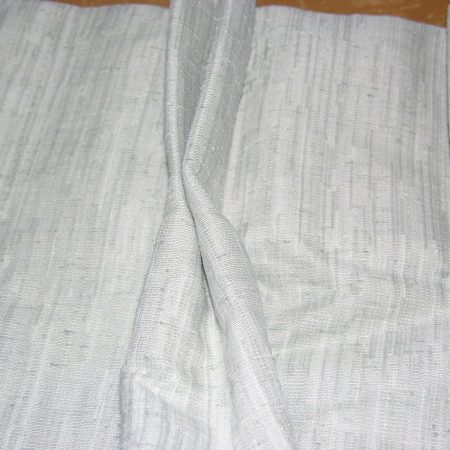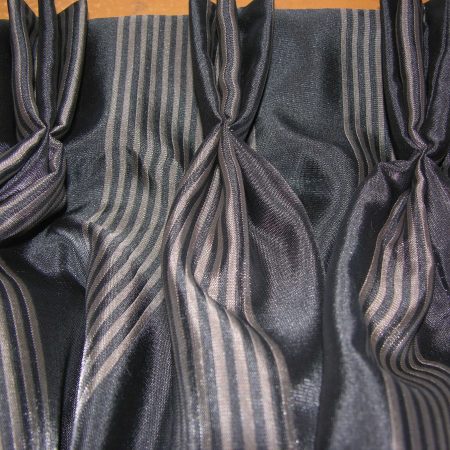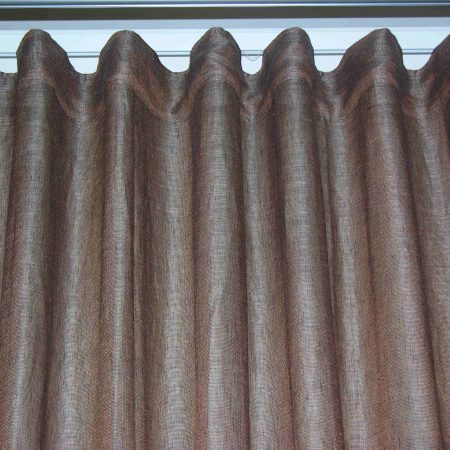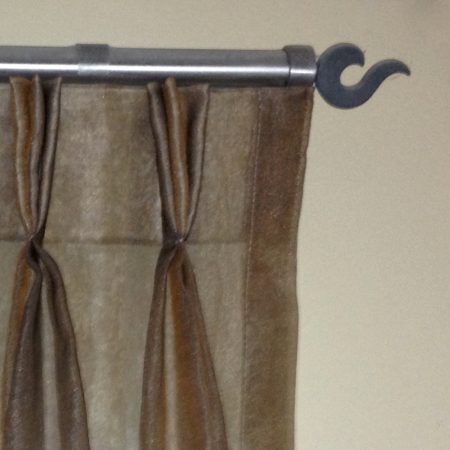Pleated curtain are hung from a hook attached to the back of the pleat.
Pleated curtains can be Lined or unlined, and made from most fabrics.
knife pleats are generally used for sheer curtains sitting behind main drapes. This is a continuous flat pleat forming an even gather across the curtain. Knife pleating is the least expensive curtain to make. Knife pleating can also be used on a main curtain under a pelmet or valance. Knife pleat is not usually applied to a stand alone curtain, however if a 75mm knife pleat with 15mm head, is applied to a curtain the result, is a neat uncomplicated look for a modest curtain. Knife pleating requires no less than two times fullness and can be made as full as three times fullness.
Pinch Pleats are the most common pleating used, for good reason. A pinch pleat will stack back the neatest. The pleat can be anywhere between 1.5 fullness and 2.5 x fullness, depending on the look desired. Pinch pleats can be a single pinch which is commonly used in contemporary designs. A single pinch only requires 1.5x fullness, and when an expensive fabric is be used can assist in keeping cost to a minimum. A single pleat is useful when a curtain with minimum stack is required. Double pinch pleat is used in contemporary and traditional curtains. The triple pinch pleat is a traditional look which achieves a full volumed appearance.
